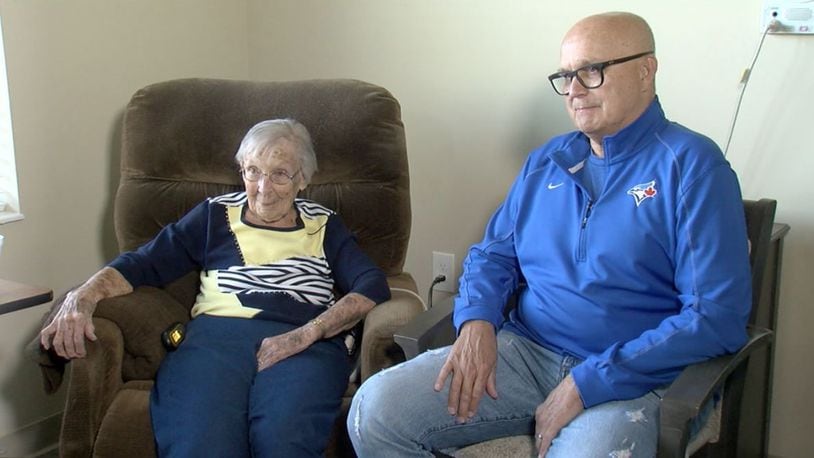“When you don’t have enough staff sometimes, they can’t open up the hair salon,” said Helen’s son, Dennis Paulik. “And when you don’t have enough staff, meals get served in the room. To me it’s not for lack of trying. They just don’t have enough manpower.”
Paulik worries about what his 100-year-old mother is missing out on: time outside on the patio, weekly visits to the hair salon, eating with friends in the dining room, and knowing that her meals will arrive on time.
“I don’t think the level of the care that she needs has suffered,” Paulik said. “It’s really the things that make her life fun that really takes a hit when they don’t have enough people.”
No one from Chesterwood Village immediately responded to a request for comment.
One-third of Ohio’s nursing homes are short staffed, said gerontology professor Bob Applebaum, and home care and assisted living centers are also struggling to find workers.
“I can tell you that when it comes to the worker shortages in long term services, the problem has never been greater than it is today,” Applebaum said. “In my whole career.”
Applebaum has been studying Ohio’s aging population for 40 years and is director of the Ohio Long Term Care Research Project at the Scripps Gerontology Center at Miami University.
Nursing homes have struggled to retain workers for decades. Poor wages, strenuous work and lack of recognition fuel high turnover in this industry that is made worse when unemployment levels are low.
“So you pay teenage kids more money to flip burgers at McDonald’s than we do for people who are providing very difficult personal care to individuals with a functional disability,” Applebaum said. “Helping somebody use the bathroom, helping somebody get dressed.”
The pandemic made the jobs even more stressful, Applebaum said.
All long-term care facilities across Ohio are experiencing some degree of staffing shortages, said Ohio Health Care Association Executive Director Pete Van Runkle in an interview with WCPO last week.
“People are leaving because they just can’t take it anymore,” Van Runkle said. “They can’t take having to deal with the pandemic. Because health care and long-term care, in particular, are on the front lines.”
Van Runkle expects more staff members will quit to avoid the COVID vaccine mandate that President Joe Biden announced two weeks ago. He is requiring vaccinations for workers in most healthcare facilities that receive Medicare or Medicaid reimbursement, including hospitals and nursing homes.
“Things just keep getting worse and there’s not really a lot of light at the end of the tunnel,” Van Runkle said. “Folks are already walking out the door. It’s like, OK I know this mandate is coming and I’m not going to comply with it, so I’m just going to go ahead and find another job now.”
Nursing home operators are in a tough spot between wanting to protect vulnerable residents from COVID and needing to retain staff members who may not want a vaccine.
The whole industry is struggling with fewer residents and higher costs due to COVID testing and paying higher wages for temporary staff, Applebaum said.
That is especially the case in Ohio, where nursing home staff shortages are higher than the national average. But vaccination rates among staff members are low compared to most other states.
“Ohio is a large state. We’re the sixth largest aging population in the country, so we have a lot of old people,” Applebaum said. “And we have a lot of nursing homes.”
Recent data from the Centers for Disease Control and Prevention show that 79 percent of residents in Ohio’s long-term care facilities are fully vaccinated for COVID. Yet just over half of health care workers inside those facilities, or 53 percent, have been fully vaccinated.
It will likely be months before nursing homes know if the vaccine mandate has made staffing and safety better or worse.
But at age 100, Helen Paulik is focused on tomorrow.
And if there’ll be enough staff to push her wheelchair out to a sunny spot on the patio.
“I would like them to take me outside when it was nice. And have a good meal,” Helen Paulik said. “There’s nothing better than sitting outside with somebody else. It doesn’t make any difference who it is.”
About the Author
